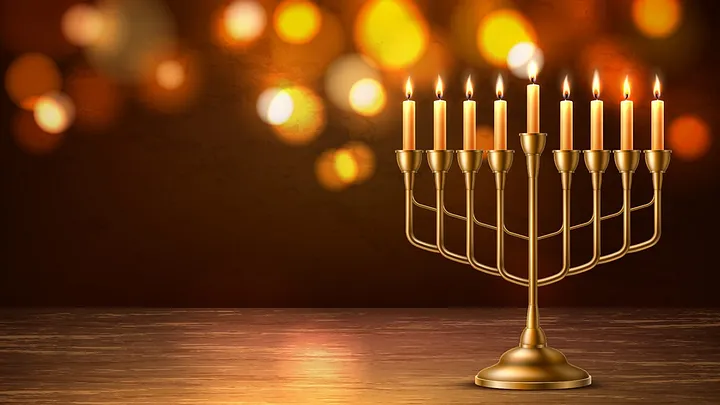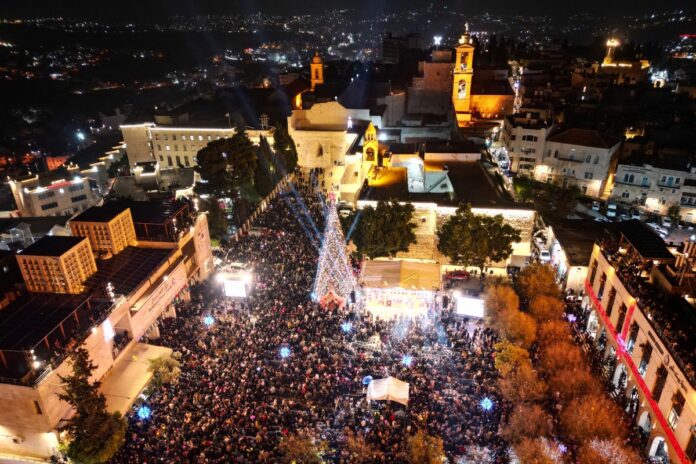ISRAELVALLEY EXCLUSIF (Deuxième Edition). La « Collection Elisabeth & David Rouach », est présentée à partir de cette semaine dans le magnifique musée de l’Islam et de l’Extrême Orient de Beersheva.
Cette exposition rappelle la grande contribution des marchands missionnaires berbères à la diffusion de la religion musulmane au sud du Sahara.
Du VIIIe au XIe siècle , le commerce transsaharien de l’or va prendre son essor grâce à la création de grandes cités commerciales : Zâwiya, Ouargla, Sijilmassa, Tombouctou.
Si les berbères détiennent le monopole sur les routes transsahariennes reliant le Maghreb à l’Afrique, ce commerce transsaharien est une économie d’échanges qui mobilisera des moyens énormes en hommes et en animaux pour le transport de marchandises , capitaux sel, cuivre, or etc.
De nombreuses communautés juives se trouvaient souvent au cœur de ces grandes pistes caravanieres : à Biskra, à Touggourt , à Ouargla dans les régions désertiques du sud Tunisien et de la Tripolitaine, à Ifrane au Maroc à sijilmassa dans le tafilalt. Ce sont les juifs qui contrôlaient une partie du marché de l’or.
Gigantesque barrière entre les hommes, ceux du nord et ceux du sud du continent africain, le Sahara a donné lieu dès le IXe siècle aux origines du tout premier commerce transsaharien. Le commerce transsaharien, caravanier et chamelier a été pratiqué essentiellement entre le XIIIe et le XVIe siècle.
INAUGURATION. Cette semaine une nouvelle exposition, dirigée par Dr Sharon Laor-Shirak (Commissaire d’exposition), a été inaugurée à Beersheva en présence de Ruvik Danilovich, Maire de la ville et de plus de 150 invités venant de Jérusalem, Tel-Aviv…
La « Collection Elisabeth & David Rouach » a été présentée officiellement au « Musée des cultures islamiques et du Proche-Orient ». IsraelValley a assisté à la soirée d’inauguration (visite complète du Musée, musique et cocktail). L’exposition est magnifique et mérite amplement d’être visitée. (Nous vous la recommandons très vivement). Pour ceux qui l’ignorent, on peut trouver disposés dans la cour du Musée des vestiges archéologiques qui rappellent la présence arabo-musulmane dans la région datant du VIIe au XIe siècles. Ces vestiges sont prêtés par l’Autorité israélienne des Antiquités.
Le musée est situé dans un bâtiment impressionnant, qui abritait autrefois le musée archéologique de la ville. La cour du musée est devenue un jardin symbolique avec une fontaine décorée et contenant des objets archéologiques d’Israël, de la culture islamique et des peuples des nations orientales. A l’intérieur du bâtiment, des expositions temporaires sont présentées.
C’est un fait. L’art islamique régional est toujours bel et bien vivant à Beersheva. Le Musée accueille fréquemment des œuvres d’arts modernes produites par des artistes musulmans originaires du monde entier. Beersheva, ville capitale de Negev, est située à seulement 60 minutes en voiture de Tel Aviv et 50 minutes de la Mer Morte. Parmi les plus vieilles villes du monde, Beersheva offre l’opportunité de visiter de célèbres sites historiques.
(Le saviez-vous? C’est le maire de la ville, Ruvik Danilovich, qui a impulsé la réhabilitation et la restauration de la Vieille Ville de Beersheva. Il a profondément contribué à sa renaissance ainsi qu’à celle de la ville de manière plus générale. Avec son administration, il a entrepris la restauration de nombreux espaces verts datant de l’époque ottomane et en a fait construire de nouveaux pour « aérer » la ville ».)
Ci-dessous le discours d’inauguration de David Rouach (1).
(1) David Rouach, né à Sidi Bel Abbes (Algérie), est un ethnologue et médecin français, spécialiste de la culture séfarade et des relations entre Juifs et Arabes. ll détient et assemble une collection privée d ‘Art Islamique depuis près de 30 ans. Il a écrit trois ouvrages sur le judaïsme en terre d’ Islam, en particulier au Maroc.
Le texte du discours, traduit en hébreu, a été lu par Tal. Le Dr Robert Rouach a joué un rôle clé dans la création et mise en place de cette superbe exposition.
(1) Dr David Rouach. « Collecting is like hunting, in that not only you have pleasure from the objects you collect, but the actual pursuit in itself is satisfying. Every piece I have acquired has a tale to tell, and each acquisition has been the result of either a sudden passion or a slowly growing affection. I have rarely purchased an object which I did not like, or which did not interest me, however important it may have been, and my preferences and dislikes have naturally limited the range of my collection.
Why do people collect? Is it a mere old hunting instinct? Or does a collection give its owner a feeling of financial security with the accumulation of objectss? Or is it perhaps merely a way of investing money? It has also been suggested that many collectors are aiming for social recognition, since a fine collection can be a good ticket into the high society. Whatever the reasons, I think there are “born collectors” who would collect anything. I knew someone who, before he started his art collection, had the largest collection of stamps. My wife and daughter have been collecting perfume samples for years. I do not think either of them had investment in mind, nor were they wanting to enter into the higher circles of society! Maybe there is some truth in the hunting instinct theory after all!
My passion for Islamic Art began with jewellery. I first became aware of them at the age of six, when my grandfather Raphael a jeweller in Meknes Morocco told me not to step on one as I was walking. My uncle had a pair of silver fibulae and I learnt from him that it was an accessory used to attach clothing and adornment. He was very fond of jewelery and a collector.
My wife Elisabeth has an excellent eye and her approach is instinctive. It takes her only a few seconds to assess the beauty of, for example a Ottoman carpet and buy it. She loves the colours and has a wonderful flair for discovering pieces.
My love for Oriental manuscripts began at the then Musée des Arts décoratifs in Paris where I saw a manuscript extract of the Shahname, a long epic poem written by Ferdowsi in 1000 CE and is the national epic of Greater Iran. It was this wonderful piece of art that prompted me to buy my first book about Persian manuscripts and visit museums, art galleries, and exhibitions.
My journey towards collecting the art of sub-Saharan Africa was less obvious as this art lacked the vibrant palette of colors which drew me immediately to the other forms of art I was already interested in. I suppose my answer lays in the fact that I was interested in the African civilization. This vast region includes populations from the desert, from the Mediterranean and from the forests of the Gulf of Guinea. I believe that no collection of Islamic art can be complete without the rest of the Muslim world in Africa, which was previously conquered and strongly influenced by the Islamic world. For example, Kuran manuscripts from Timbuktu, Mali dated from the 17th century which are presented in this exhibition. Another example are the pendant amulets from Tuareg tribes in Sub_Sahara, Mauritania which contain inside extracts of the Kuran. I have always regarded Islamic art as a unity.
I would like to thank Sharon Laor-Shirak for being instrumental in the organization of this second exhibition. It is a culmination of a relationship I have had with the Be’er Sheva Museum of islamic and near Eastern Cultures and its staff for over five years. It is my hope that through this exhibition, I can communicate and share with others my passion and interest of Islamic and African Art.
Finally, I would like to dedicate these lines to the memory of my parents who transmited me the love of Morocco and Moroccan art, and without them this collection would not have come into existence.
Photo Copyrights. Dr David Rouach.
…………………………………………………………………………………………………………………………………………………………………………………………………….
OUVRAGES DE DR DAVID ROUACH.
David Rouach, Armes Africaines,Parures Masculines, Gpress, , 115 p. (ISBN 978-2-9555760-3-8, https ://issuu.com/albert770/docs/armes _d_afrique)
(en) David Rouach, African Art Masks and Sculptures, Gpress, , 111 p. (ISBN 978-2-9555760-2-1, lire en ligne)
(en) David Rouach, Islamic Art, vol. 1, GPress, , 167 p. (ISBN 978-2-9555760-1-4, lire en ligne)
(en) David Rouach, Algerian Art,Jewellery,Photography and Pottery, vol. 1, Gpress, (ISBN 978-2-9555760-0-7, lire en ligne)
David Rouach, Bijoux Berbères au Maroc Dans la tradition Judeo -Arabe.( photos Jacques Adda), vol. 1, ACR, , 255 p. (ISBN 978-2-8677-0034-7, lire en ligne)
David Rouach, Les talismans:magie et traditions juives, vol. 1, Albin michel, (ISBN 978-2-2260-3790-9, lire en ligne)
David Rouach, Imma,ou,rites coutumes et croyances chez la femme juive en Afrique du Nord, préface de Haïm Zafrani, vol. 1, Maisonneuve et Larose, , 227 p. (ISBN 978-2-7068-1014-5, lire en ligne)






